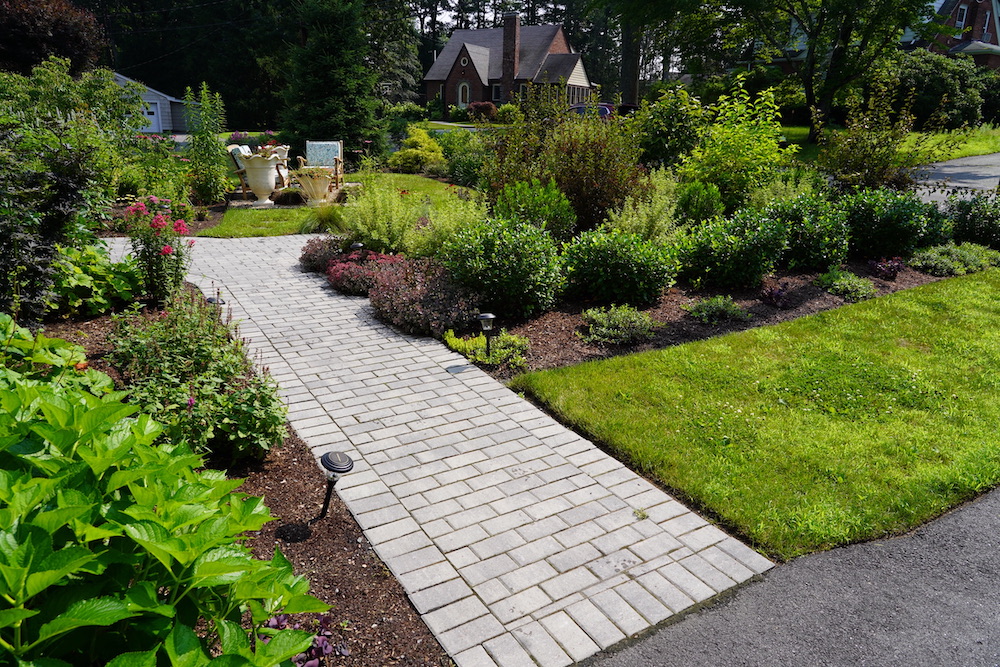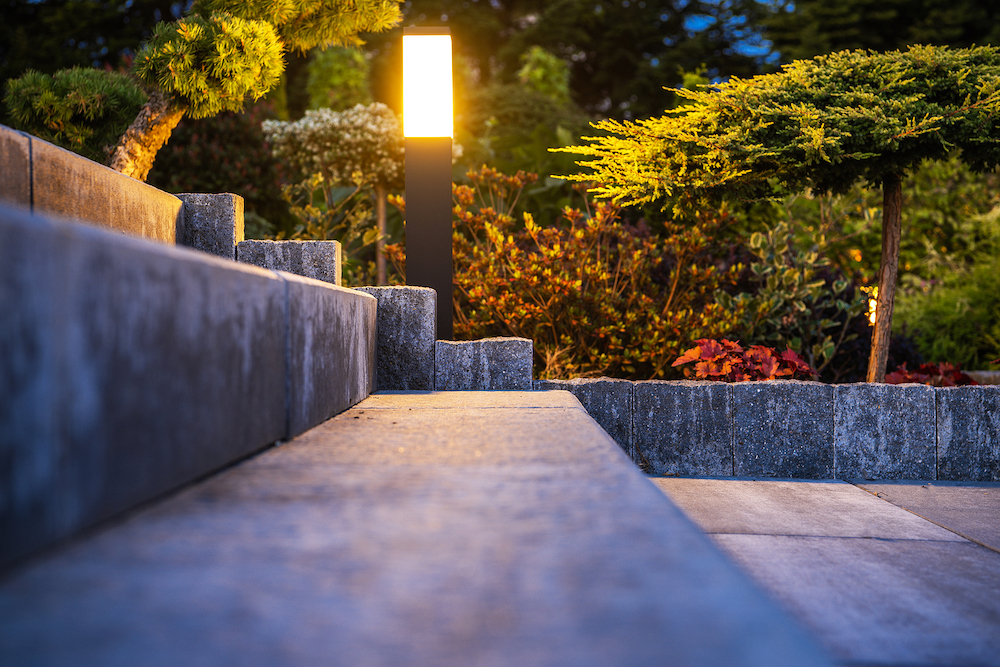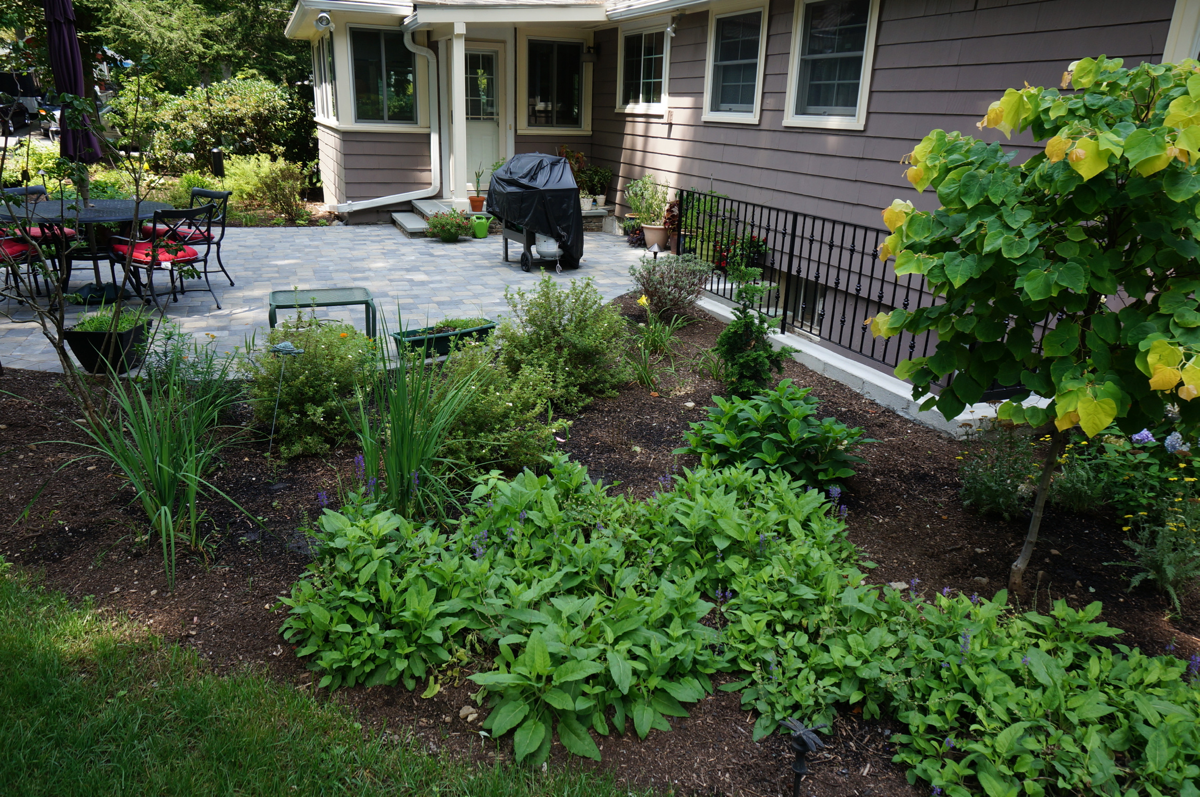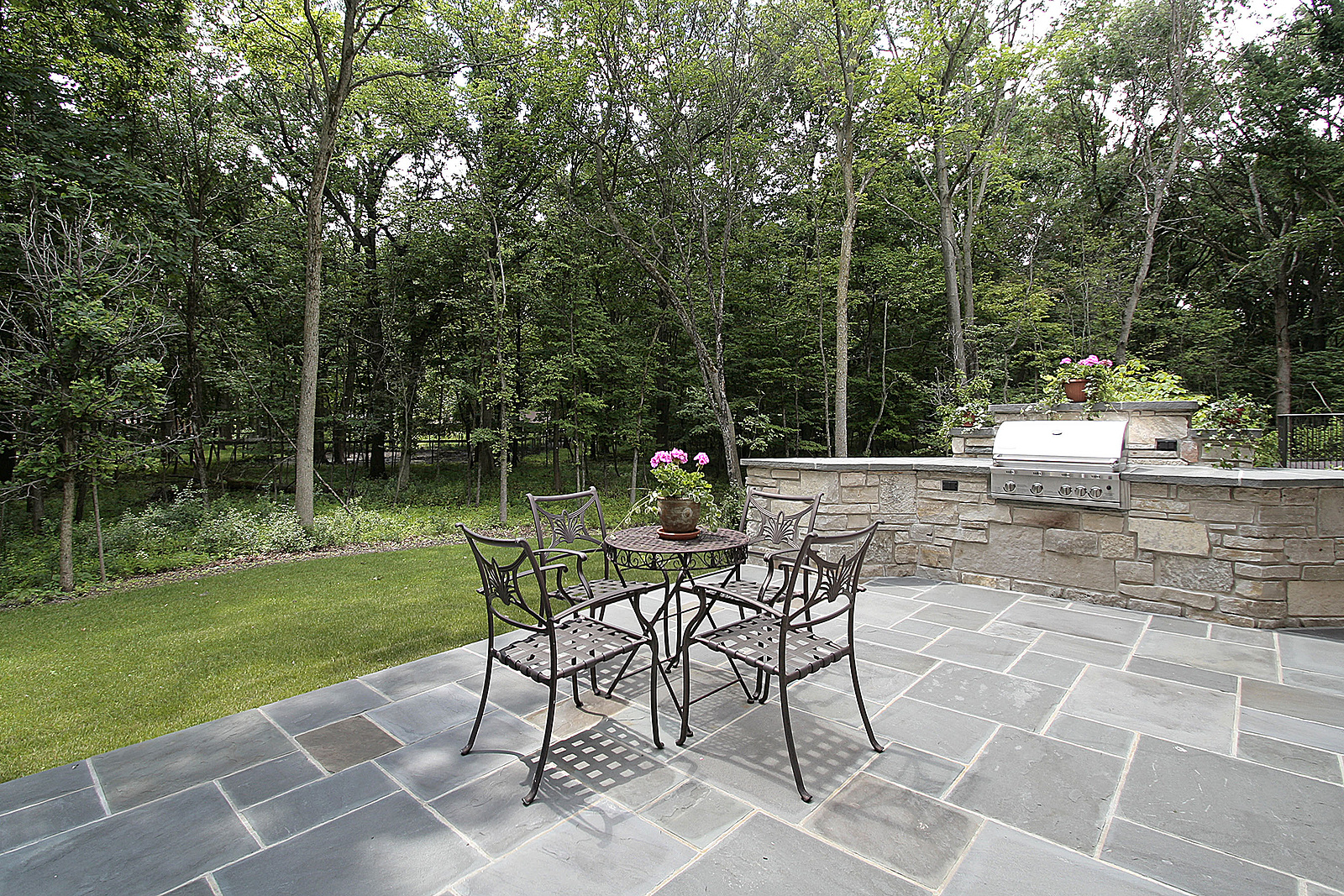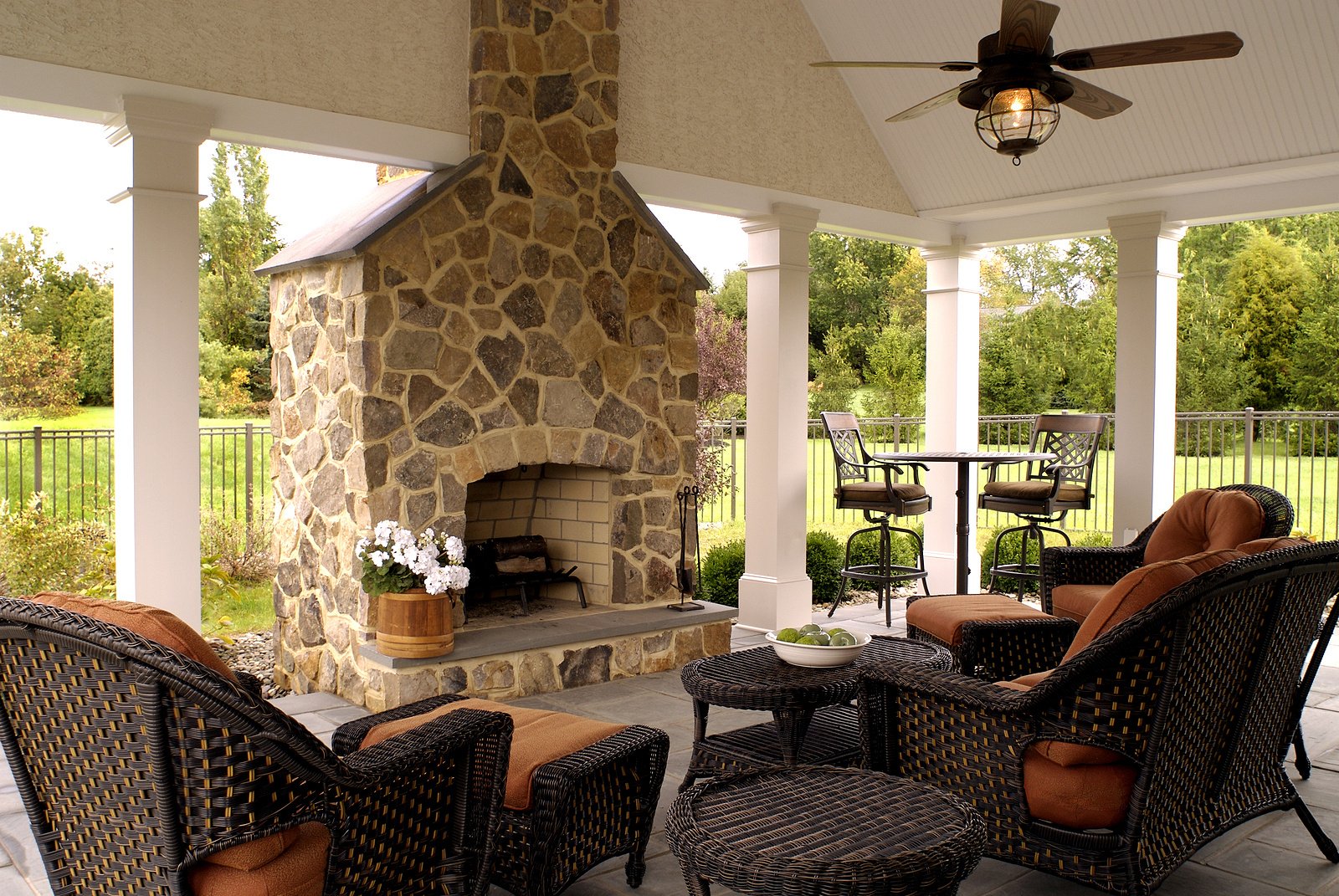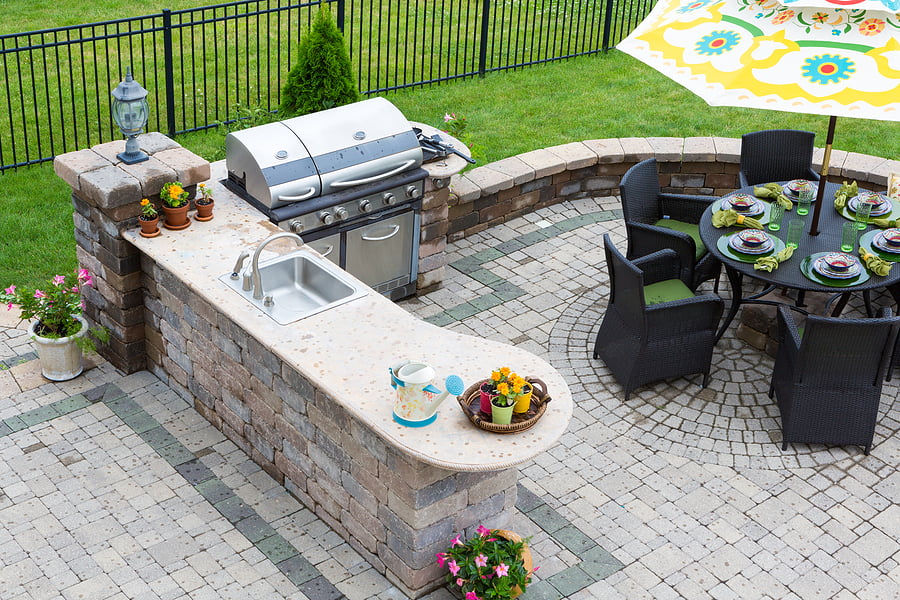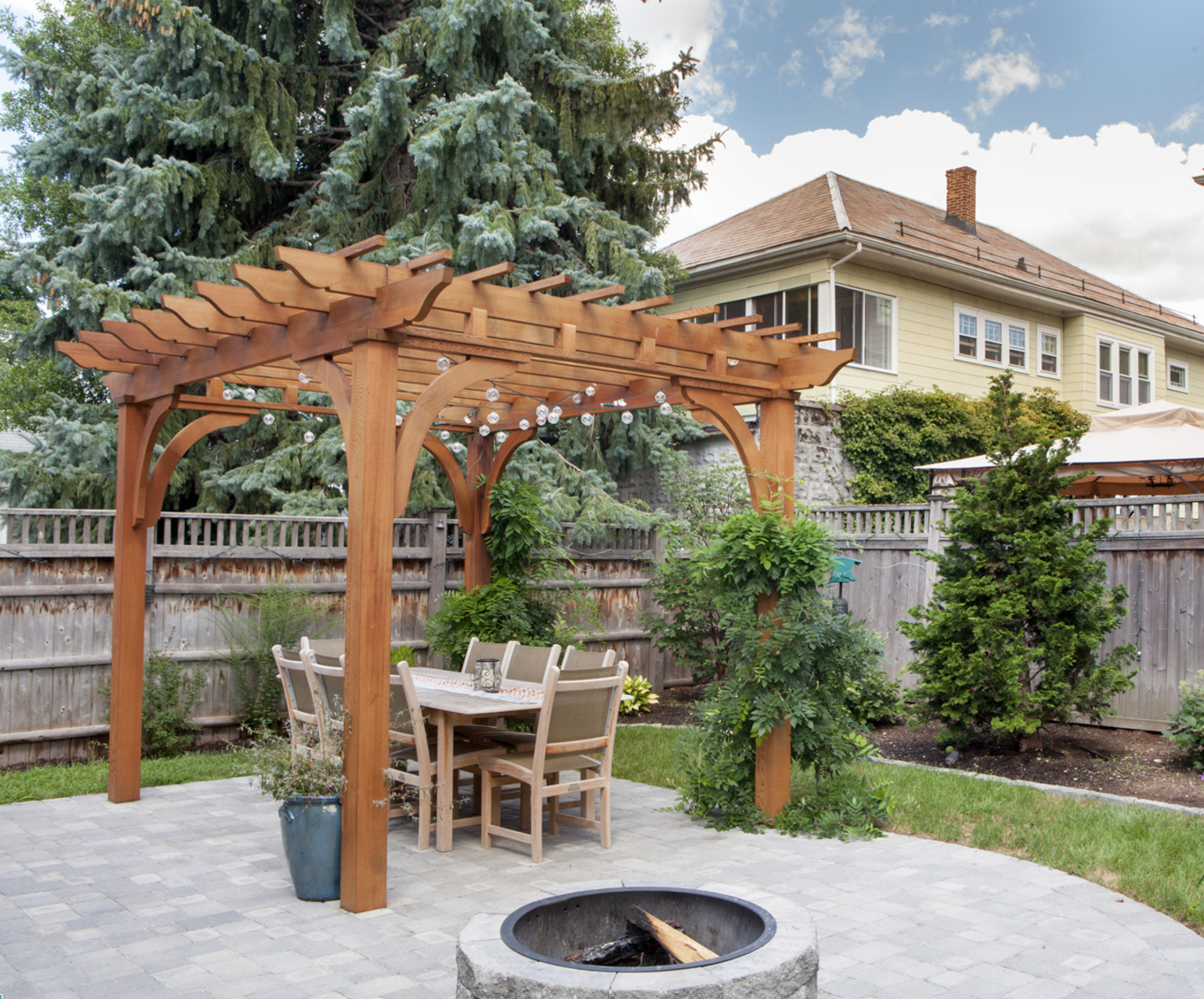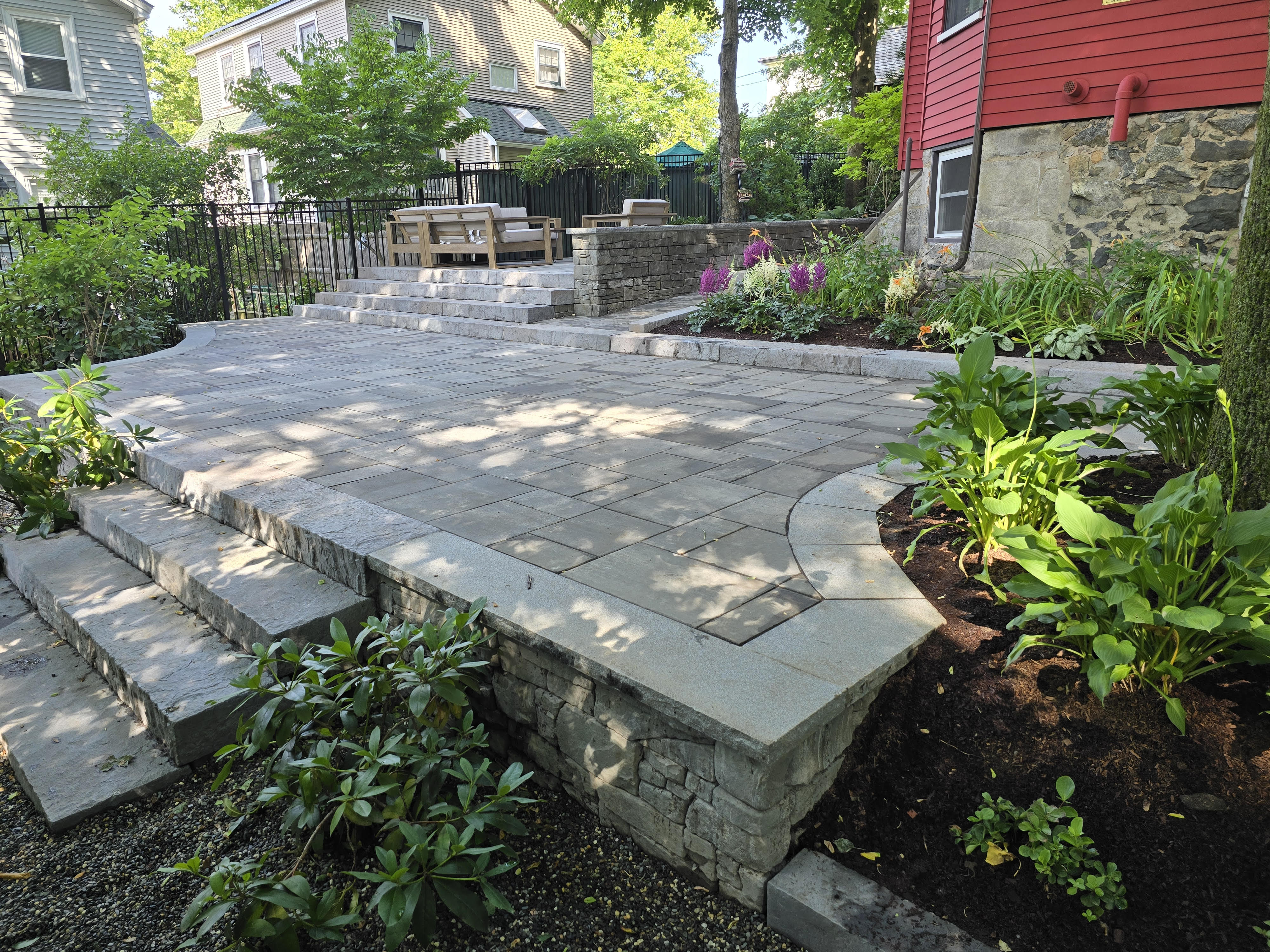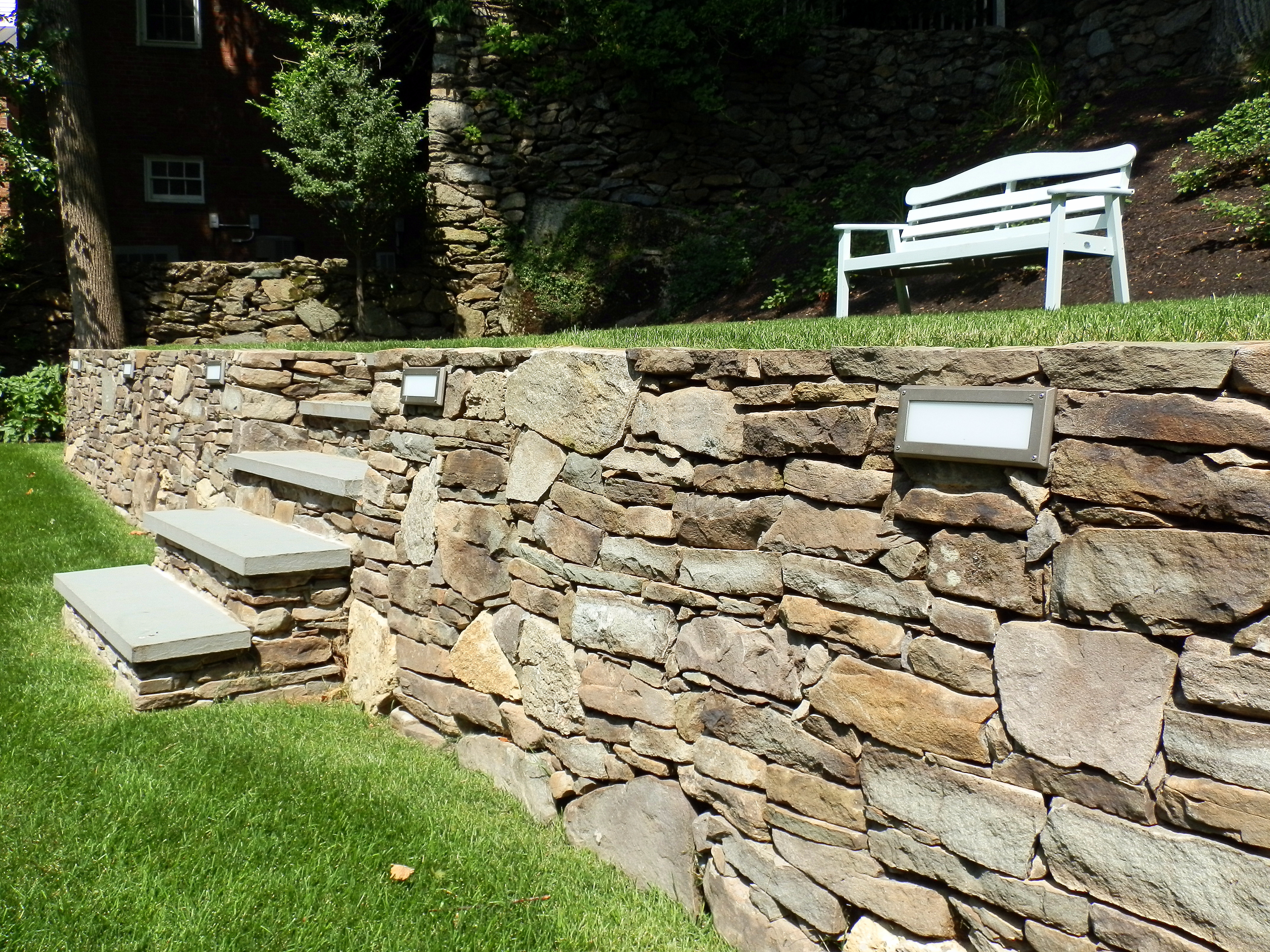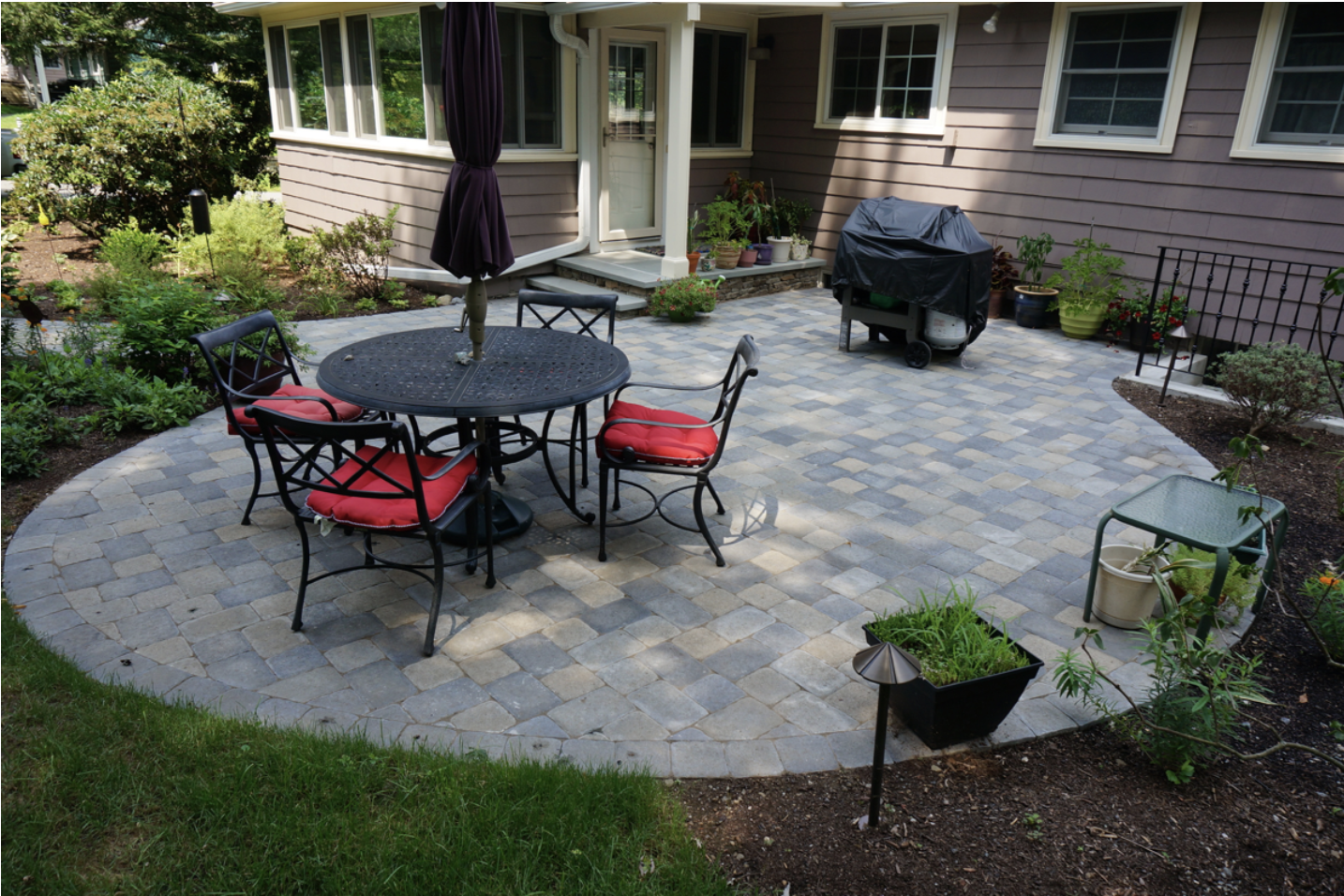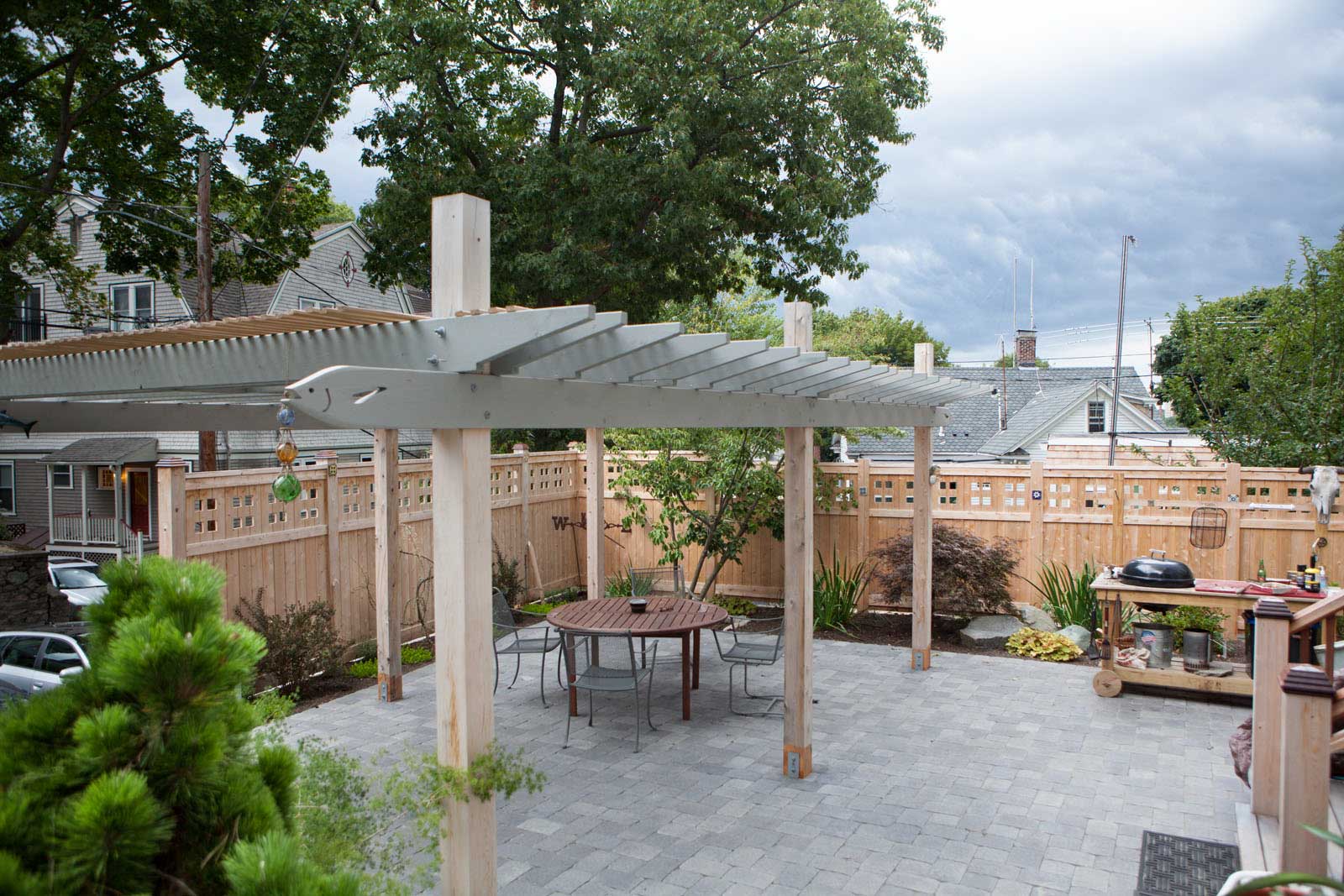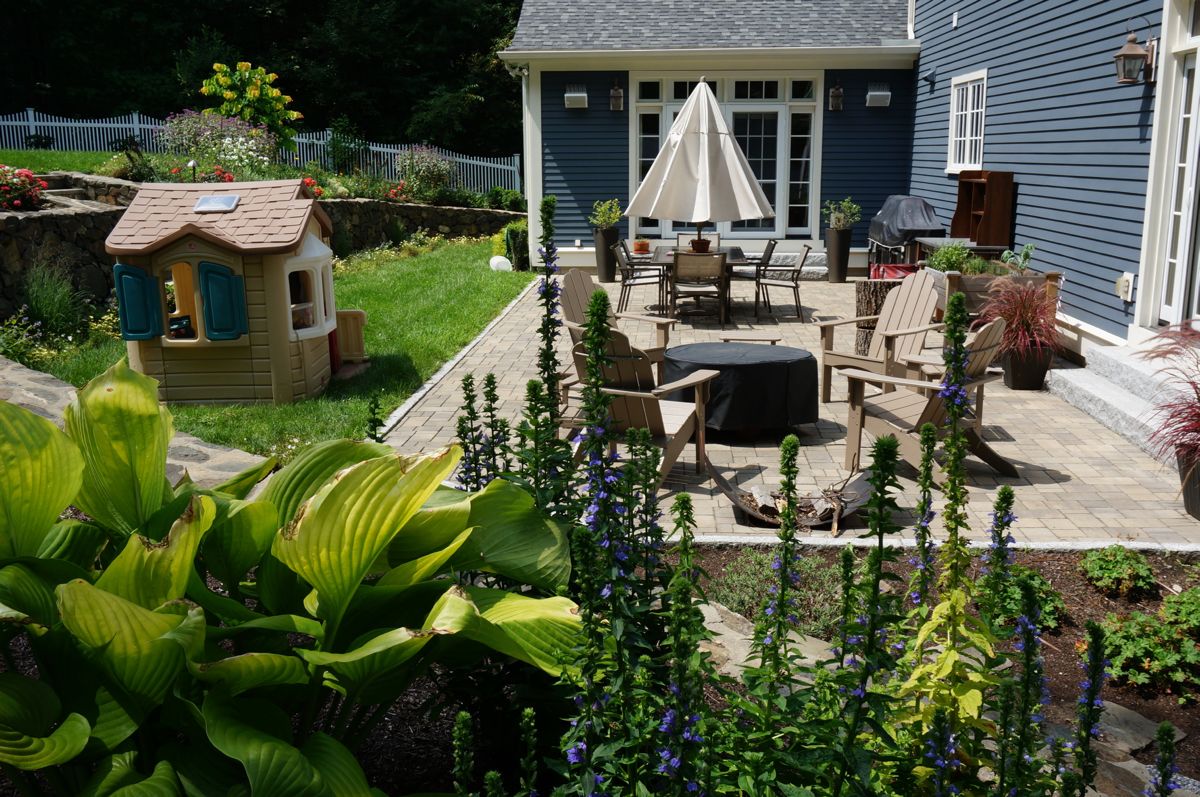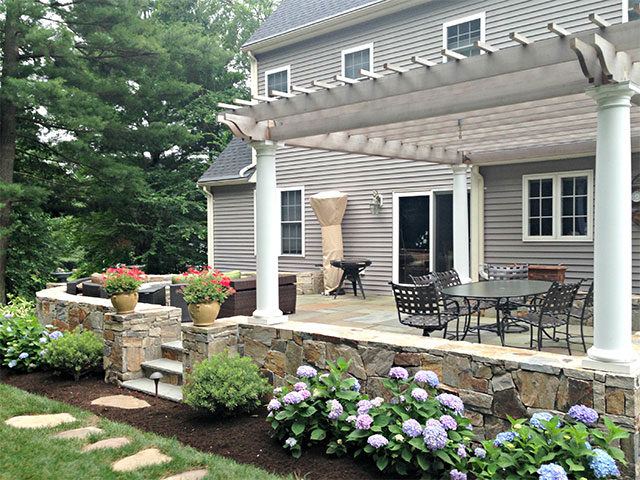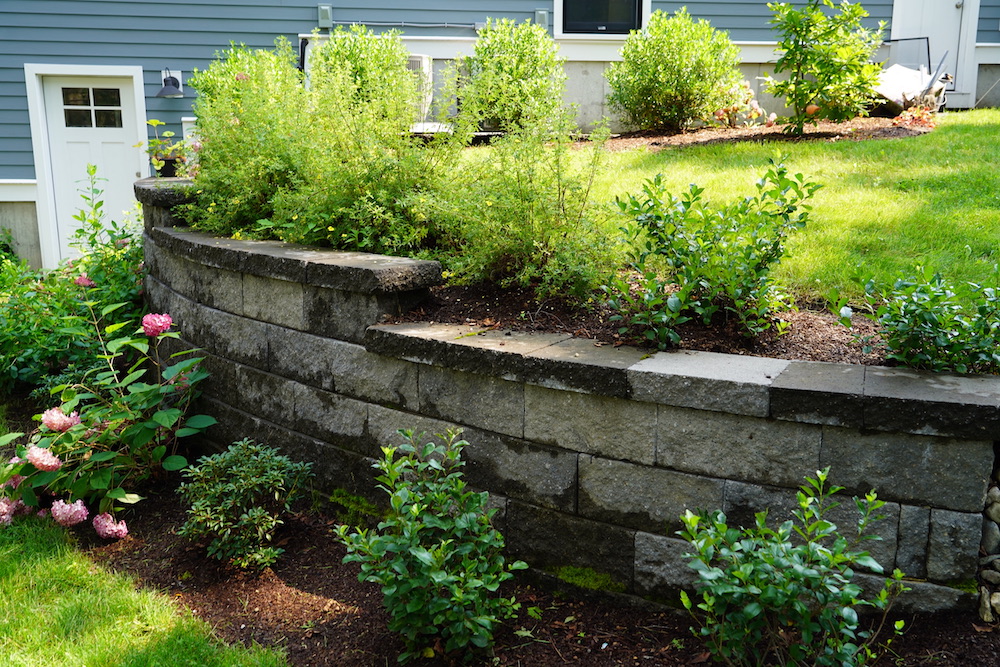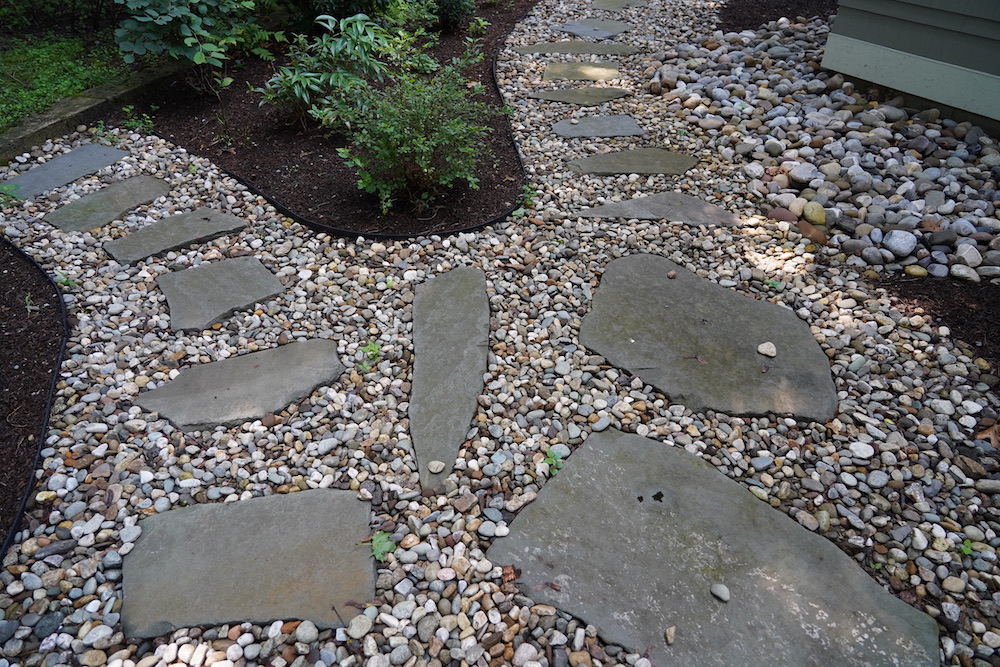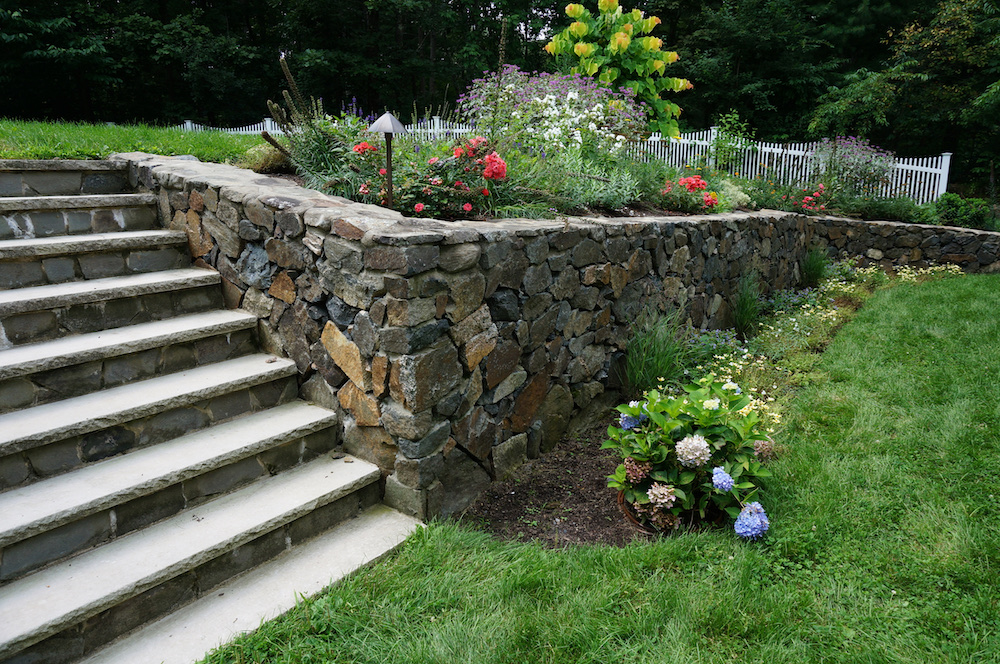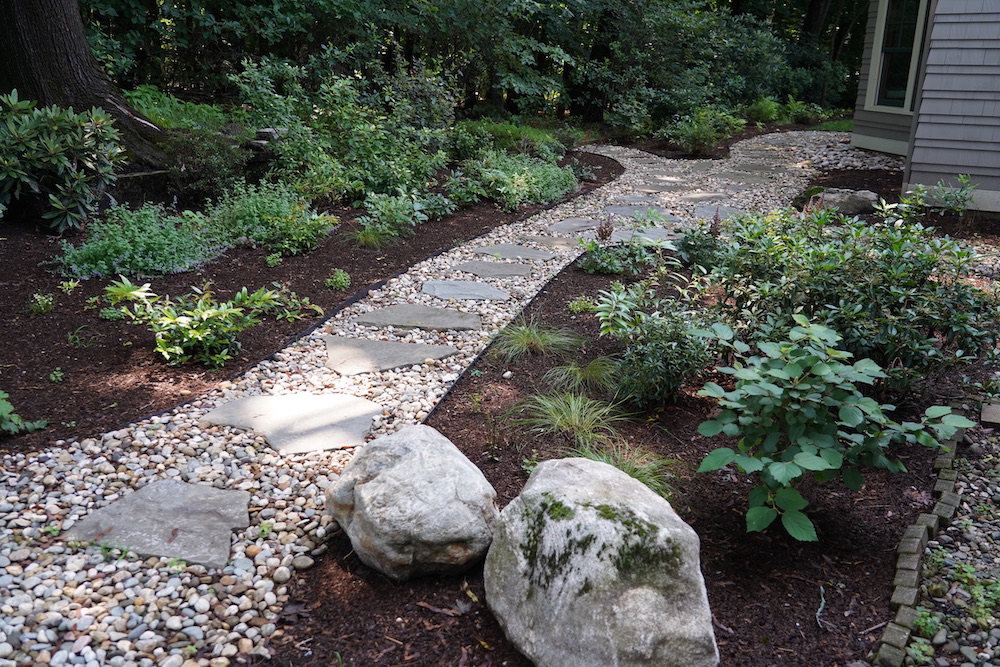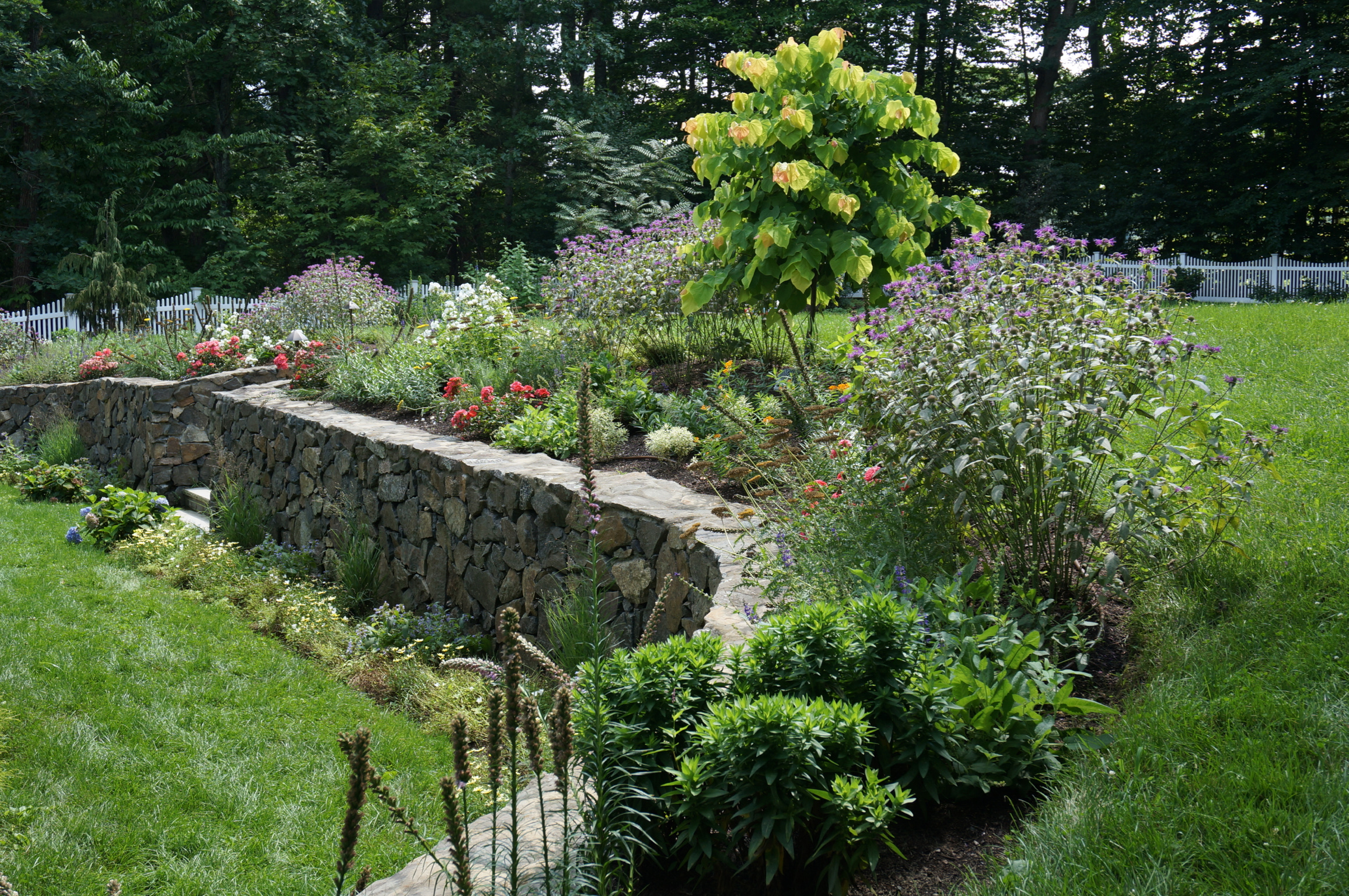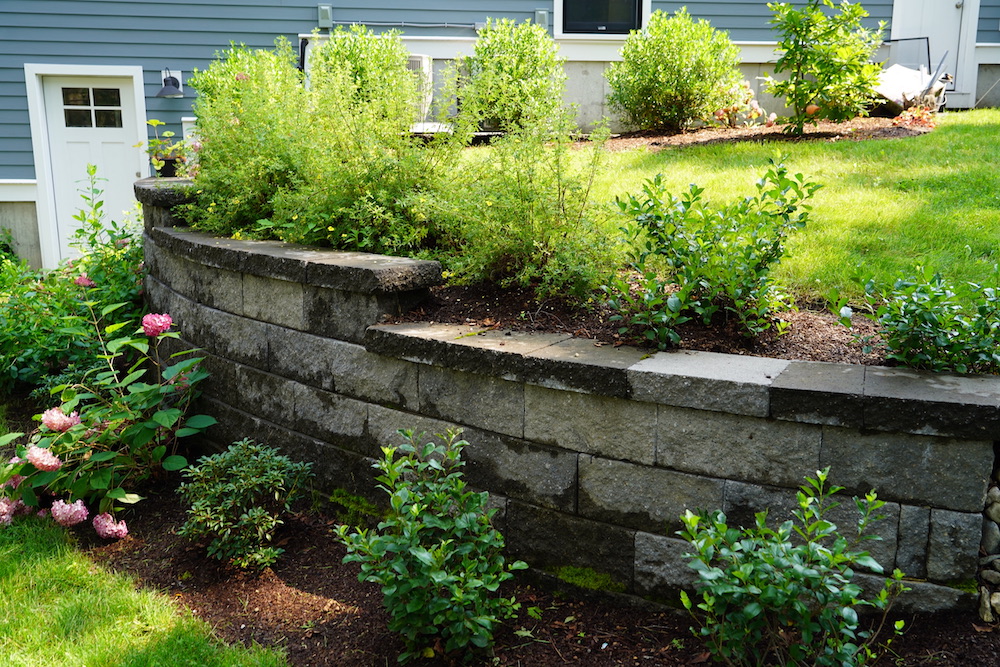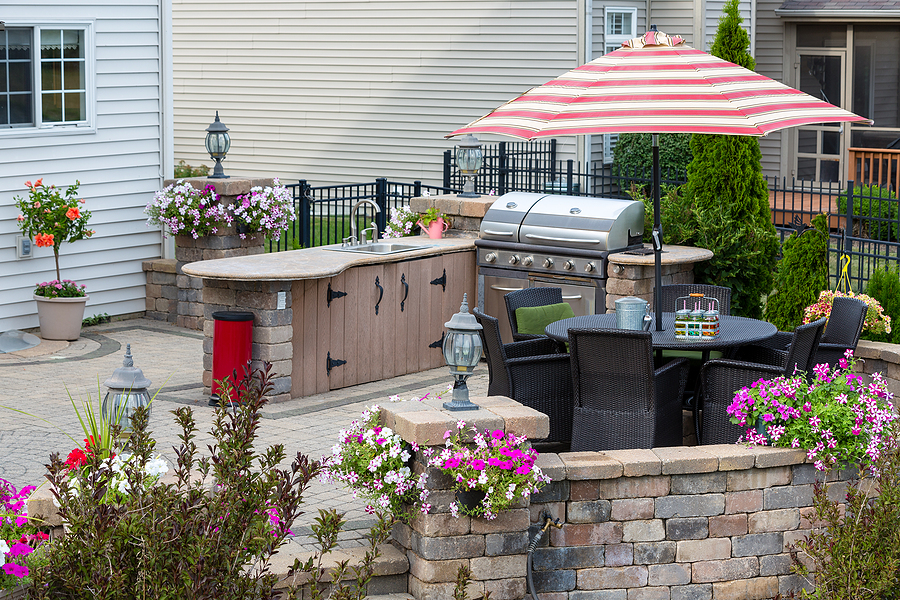Creating a solid landscape design for your yard requires more than just laying down sod and putting in new plantings. To achieve a well-designed, cohesive space, it is important to incorporate hardscaping elements alongside the organic ones.
When looking to achieve a balanced, peaceful yard, remember that hardscaping is just as important as natural features. These man-made components, such as walkways, patios, and divider walls, are an important part of the perfect outdoor living space. Hardscape features can add a great complement to your organic space, but creating them comes with a whole different set of concerns than building a vegetable garden or flower bed.
What is hardscape?
Hardscape refers to the man-made components of a landscaping project, such as walkways, retaining walls, outdoor kitchens, patios, fireplaces, fire pits, divider walls and even driveways. Hardscape can transform a basic yard into a functional — and beautiful — outdoor living space. Hardscape can be used to create natural points of connection and flow from your home into the outdoors. Think of a walkway leading from a side door to the backyard, or a patio near the kitchen that becomes the perfect space for outdoor dining.
Hardscaping can also assist in creating separate oases within a larger yard, such as a built-in fire pit or small patio to establish a space for lounge chairs.
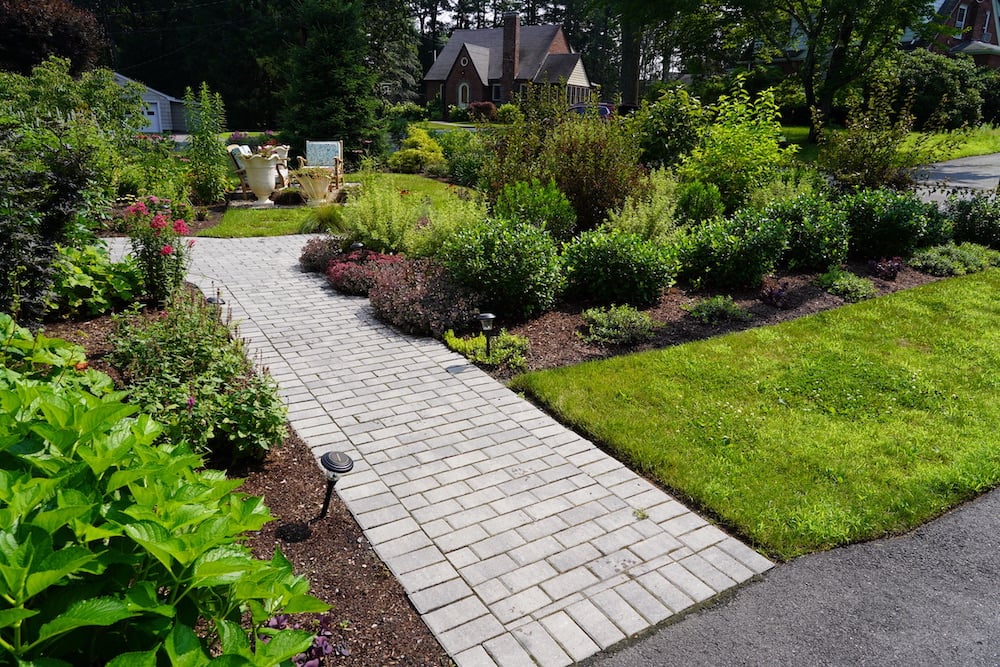
When done thoughtfully, hardscape can add value to your home by improving its curb appeal and increasing usable space on your property.
How is hardscape different from landscaping?
Hardscape design often requires more site work than a typical landscaping project. While hardscape does not typically involve building large structures, remember that you are constructing something that requires a solid foundation if it is to last. It may be necessary to spend time leveling the ground and/or laying in foundations to create the right base for the project.
As with landscape projects, you will need to consider which hardscape materials are the right fit for your space — both in terms of budget and aesthetics. The color of your home’s exterior, existing plantings (or new ones you’ve planned), and surrounding softscaping elements like soil, mulch or water features are all important to think about. A material you love for its looks may not provide the right functionality, or may be over your budget.
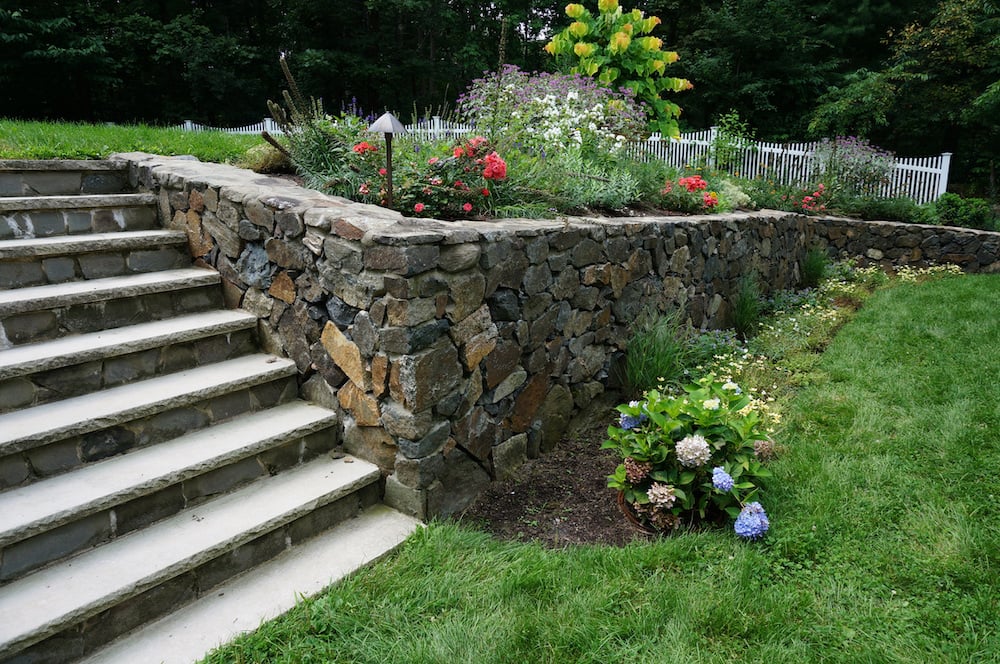
Hardscape projects also need to take into consideration the size of the space and the balance you hope to achieve between man-made and organic spaces.
Perhaps you want to create a hardscape that takes up the bulk of your outdoor space and minimizes the need for lawn care. Perhaps you want to think of hardscape solely as transitional space between indoors and your yard. Hardscape can also improve accessibility to your home and its outdoor spaces.
Ensuring sufficient play space for children and pets or for the amount of entertaining or gardening you hope to do must also be part of the design process.
What are the types of hardscape materials?
You’ll have multiple options of materials for your hardscape project. Typically, these are: man-made, natural and repurposed hardscape materials. A professional landscape design company can help you determine the right choices for your space.
Man-Made Hardscape Materials
These materials include concrete, brick, pavers, and asphalt. Man-made materials will often be used in brick patios, walkways, and fire pits. Many homeowners are interested in engineered hardscape materials for their projects for their durability and cost-effectiveness. They also allow for greater design possibilities than other types of materials with patterns, finishes and more.
Natural Hardscape Materials
Wood is a natural material that can be involved in hardscape design elements like decks and pergolas, although it will require regular maintenance. There are also natural types of stone to use such as bluestone, slate, or flagstone.
Deciding on the type of stone to use in your hardscaping project is much more involved than simply making a trip to your local garden center and picking a set of beautiful pavers.
There will be stone that you think looks fantastic, but is out of your budget, or may not quite fit in the space you’re planning. On the other hand, a stone that you don’t enjoy as much aesthetically could be well within your budget and match the required functionality perfectly.
A few common types of natural stone to consider for your hardscape include:
Peastone
This versatile stone, also known as pea gravel, is often used in commercial settings, but for the homeowner, it is easy on the budget. Peastone is around an eighth of an inch in size and smooth in texture, so setting a solid foundation of compacted soil and stone dust and surrounding the area with a steel edge is important for keeping it in place.
Bluestone
A type of stone native to the northwestern United States, bluestone comes in multiple colors ranging from blue to gray to green. Shapes can vary from a straight-edge square to irregular pieces similar to fieldstone. Bluestone can be set on a sand foundation and provides a nice flat surface for patio furniture, a pergola or gazebo.
Repurposed Hardscape Materials
Do you have leftover materials from a home project that you just aren’t sure what to do with? Repurposing them as the basis of your new hardscape is a great option to maximize their use while minimizing your costs.
Repurposed hardscape materials can fit in both of the categories we already explored above. Salvaged bricks, wood, concrete and cobblestone all are great options for a hardscape project. You may also want to upcycle old materials that would otherwise be discarded, such as metals, by giving them new life in your hardscape design.
Examples of Hardscape
Front Entry Walkway
At this client’s home, a beautiful arbor design is complimented by an existing hydrangea paniculata 'Pink Diamond' Tree. Well designed front entry walkways connect the front yard to the back yard in a fluid manner. This particular side yard design has fieldstone steps surrounded by plants as you walk through to the back yard.
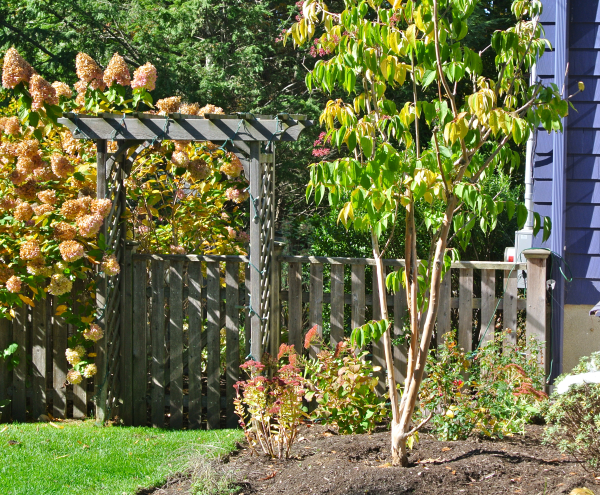
Enter through this arbor way and be amazed by the beautiful pink flowers in bloom. Hydrangea trees are a beautiful addition to any landscape, but make sure to prune them properly and at the correct time of year.
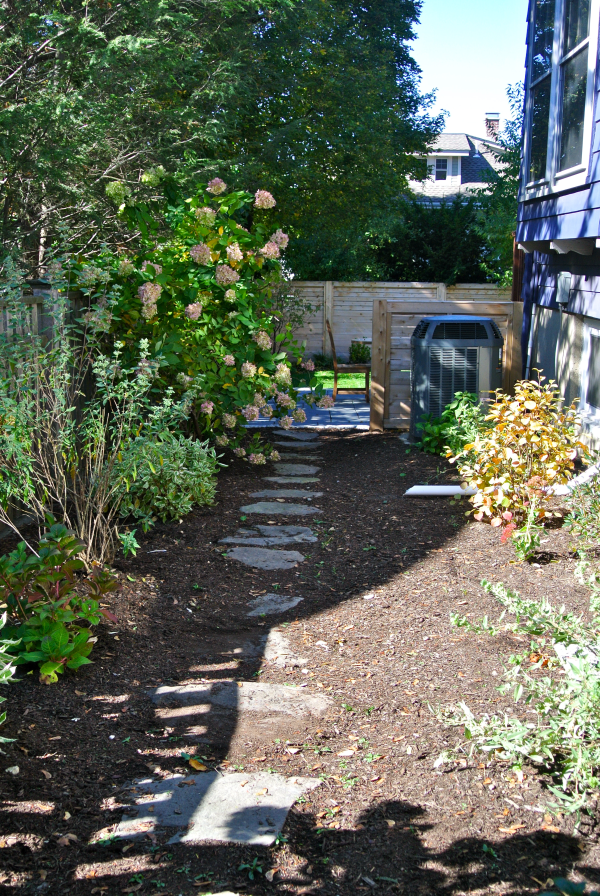
Fieldstone Walkway
Fieldstone walkways create a natural, elegant, and easy to follow front yard entrance way. Flat fieldstone is the most natural looking stone and when installed correctly, can become a smooth surface to follow along. Often, fieldstone comes in varying heights and widths and therefore finding the correct stone is very important for creating a smooth walkway. Front entry walkways are very important for curb appeal and adding an edged garden bed with various plants and shrubs will enhance the natural look of fieldstone.
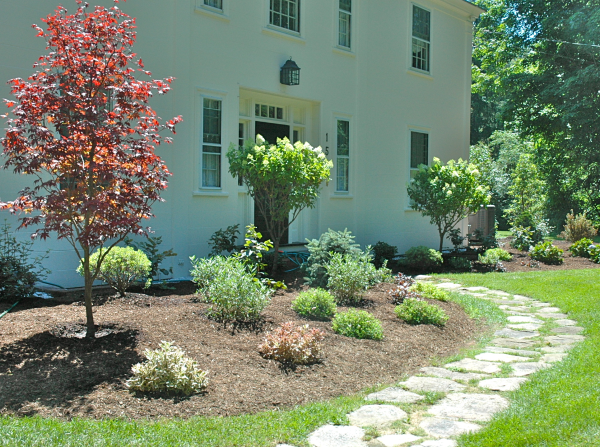
Woodland Garden
A client of Moodscapes was struggling for years trying to get lawn to grow in a section of their backyard. The area could not get enough water from the ground and the grass always ended up dying. It was built on a large tennis court many years ago and was located in a very shady area. We decided to take a new approach and create a woodland garden with stepping stones throughout. In the end, the project created a space for the whole family to sit, converse and enjoy. This created a solution to the ongoing issue of not being able to use their backyard, through a combination of hardscape and landscape.
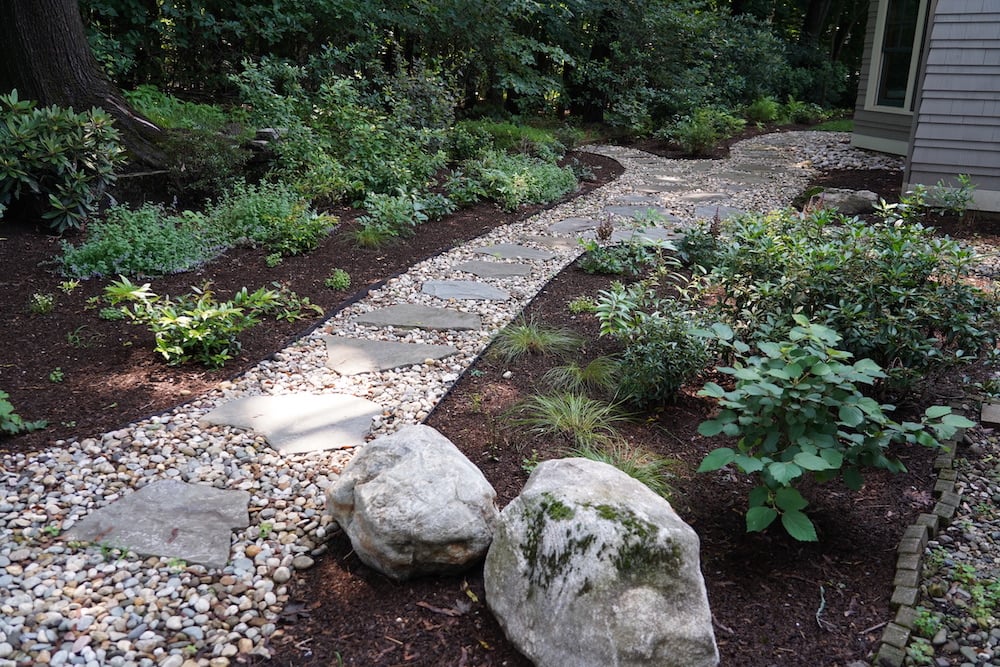
To learn more about creating a hardscape for your own home, please download our free ebook, The Expert Guide to Building the Custom Home Hardscape of Your Dreams. To get started on your own custom hardscape project, contact our Moodscapes team for a free project consultation.


